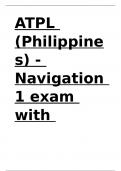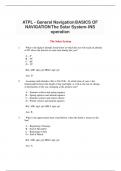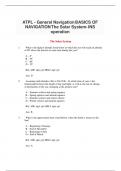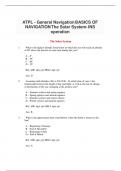Atpl navigation - Study guides, Class notes & Summaries
Looking for the best study guides, study notes and summaries about Atpl navigation? On this page you'll find 93 study documents about Atpl navigation.
All 93 results
Sort by
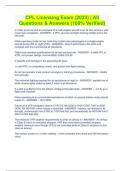
-
CPL Licensing Exam (2023) | All Questions & Answers (100% Verified)
- Exam (elaborations) • 25 pages • 2023
- Available in package deal
-
- $13.99
- 1x sold
- + learn more
CPL Licensing Exam (2023) | All Questions & Answers (100% Verified) CPL Licensing Exam (2023) | All Questions & Answers (100% Verified) In order to act as pilot-in-command of a multi-engine aircraft in an air taxi service a pilot must have completed - ANSWER - a PPC, ground and flight training initially and in the last year. While operating under air taxi rules may a pilot carry passengers in a single-engine aircraft during IFR or night VFR? - ANSWER - Only if authorized in the AOC and co...
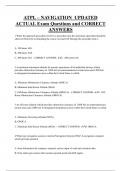
-
ATPL – NAVIGATION UPDATED ACTUAL Exam Questions and CORRECT ANSWERS
- Exam (elaborations) • 23 pages • 2024
- Available in package deal
-
- $9.99
- + learn more
ATPL – NAVIGATION UPDATED ACTUAL Exam Questions and CORRECT ANSWERS 1 When the approach procedure involves a procedure turn the maximum speed that should be observed from first overheading the course reversal IAF through the procedure turn is A. 180 knots IAS. B. 200 knots TAS. C. 200 knots IAS. - CORRECT ANSWER- C. 200 knots IAS
ATPL (Philippines) - Navigation 1 exam with complete solutions
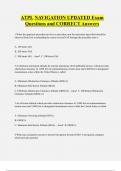
-
ATPL NAVIGATION UPDATED Exam Questions and CORRECT Answers
- Exam (elaborations) • 24 pages • 2024
- Available in package deal
-
- $8.99
- + learn more
ATPL NAVIGATION UPDATED Exam Questions and CORRECT Answers 1 When the approach procedure involves a procedure turn the maximum speed that should be observed from first overheading the course reversal IAF through the procedure turn is A. 180 knots IAS. B. 200 knots TAS. C. 200 knots IAS. - Ans C. 200 knots IAS. 2 A minimum instrument altitude for enroute operations off of published airways which provides obstruction clearance of 1,000 feet in nonmountainous terrain areas and 2,000 feet...
ATPL - General Navigation BASICS OF NAVIGATION The Solar System- INS operation
ATPL - General Navigation BASICS OF NAVIGATION The Solar System- INS operation
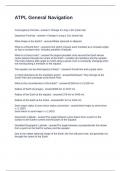
-
ATPL General Navigation Questions and Answers
- Exam (elaborations) • 13 pages • 2024
- Available in package deal
-
- $15.49
- + learn more
ATPL General Navigation
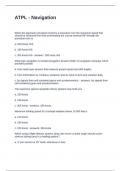
-
ATPL - Navigation Questions with Solutions
- Exam (elaborations) • 14 pages • 2024
- Available in package deal
-
- $16.49
- + learn more
ATPL - Navigation
ATPL - General Navigation BASICS OF NAVIGATION The Solar System- INS operation
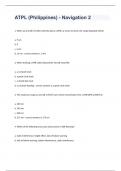
-
ATPL (Philippines) - Navigation 2 fully solved graded A+ 2023/2024
- Exam (elaborations) • 12 pages • 2024
- Available in package deal
-
- $17.99
- + learn more
ATPL (Philippines) - Navigation 2 1. When an aircraft is FL360 is directly above a DME, at mean sea level, the range displayed will be: a. 9 nm b. 0 c. 6 nm d. 12 nm - correct answers c. 6 nm 2. When tracking a VOR radial inbound the aircraft would fly: a. a constant track b. a great circle track c. a rhumb line track d. a constant heading - correct answers b. a great circle track 3. The maximum range an aircraft at FL370 can receive transmission from a VOR/DME at 800 ft is: ...

That summary you just bought made someone very happy. Also get paid weekly? Sell your study resources on Stuvia! Discover all about earning on Stuvia

